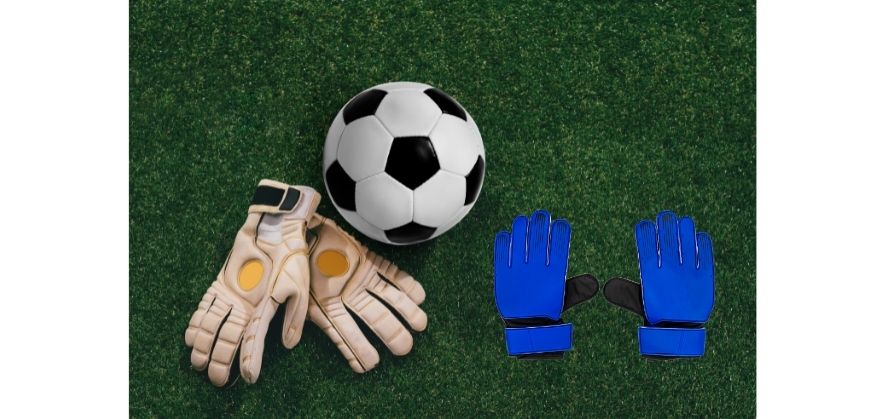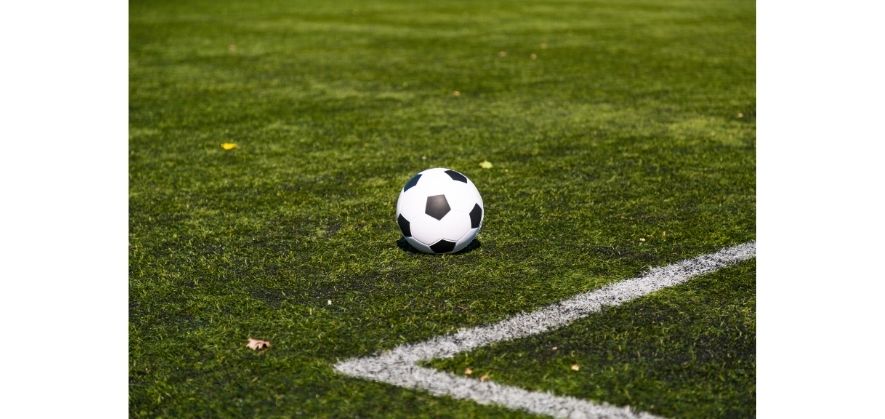Goalkeeper gloves experience a lot of strain throughout the duration of their useful life.
You see, goalkeepers require them for the grip and comfort they offer when making saves from all the shots of the soccer ball encountered during games and practice sessions.
The wear and tear on this piece of equipment certainly adds up over the course of a soccer season, which prompts the need for a replacement pair every now and again.
Although, the question that most people have in their minds concerns exactly how long goalkeeper gloves can be expected to last.
On a separate note, just think about how you conduct your own weekly grocery shop and you’ll immediately see why this knowledge is so critical for a buyer.
For example, if you’re a huge fan of pastries you’ll probably have a rough idea at what point in the week you’d finish eating a pack of six croissants, especially if you enjoyed one delicacy each day.
In a similar sense, players can plan their soccer gear purchases way ahead of time with information in hand about a product’s expected longevity, which ultimately helps in saving money and time.
Therefore, today’ article seeks to expand on the specific question of how long goalkeeper gloves last, starting with a concise summary…
Goalkeeper gloves can be expected to last for 10 to 15 matches per pair, although their overall longevity depends on other factors. These variables include but aren’t limited to pitch conditions, how well they’re maintained, the quantity and quality of shots a goalkeeper faces and the structural make-up of the pair itself.
A period of 10 to 15 matches doesn’t sound like much, now does it?
If you’re the sort of person who plays soccer on a regular basis during the week it probably makes very little sense why this article suggests goalkeeper gloves can only hold up for such a short timeframe.
Well, the reality is that goalkeeper gloves are perishable pieces of equipment.
The condition that they’re bought in isn’t going to remain constant for the duration of time in which they’re worn and used to make saves.
You’ll find this being especially the case with expensive goalkeeper gloves – which come with supreme grip levels at the expense of overall product durability.
This is why a player will be able to max out all the quality from a set of goalkeeper gloves for a 10 to 15 game-period, as after that grip levels will start to suffer because the latex starts to wear out.
Clearly, this isn’t to say that you can’t carry on using such a pair after the aforementioned 10 to 15 match stretch.
It just means that you’re likely to get less grip performance out of them than you would if you purchased a brand new pair.
How to improve the lifespan of your goalie gloves
One of the best ways to extend the life of your goalkeeper gloves is by “relegating” match gloves to become practice gloves that you use solely for training sessions.
So, invest in two pairs.

You’ll want to have one set that’s used exclusively during game days and another that you wear for practice only, as this allows you to split the wear and tear between two pairs rather than one.
With this system in place, you can plan for your future purchases of goalkeeper gloves with ease.
This is because when a practice pair begins to deteriorate significantly with hole rips present on the palm areas, you can make your existing match gloves the replacement for this worn out pair, before subsequently buying a brand new match pair to fill in the gap.
Beyond that, you can check out the video below which offers multiple “glove-hacks” that help extend the life of any pair you buy:
What factors affect goalkeeper glove longevity?
You could plan to wear your current goalkeeper gloves for a long period of time.
Maybe due to existing budget constraints or even purely out of personal preference.
If these reasons give a good description of your own circumstances, then it’s also good for you to be aware of the major impacts on their lifespan.
So, let’s start…
1. Pitch conditions

The grass isn’t always greener.
In some cases, you could find yourself playing on a pitch surface that’s got patches of dirt and sand in parts.
As soon as you sprawl to the ground to make that diving save, the condition of your goalkeeper gloves comes under threat.
Dirt and mud adds roughness to the turf, and the abrasion brought about by such movements can cause significant irreparable damage to them.
In a similar way, artificial turf is tougher for goalkeeper gloves than a natural grass surface.
Ultimately, the additional wear brought about by playing on worse surfaces can contribute to you having to find a replacement sooner rather than later.
2. Product aftercare
You probably know the drill when it comes to taking care of goalkeeper gloves.
This includes:
- Washing and drying them before and after use;
- Moistening the palms during games to “re-activate” the latex
- Using glove spray to replenish the grip elements; and
- Storing them in a cool environment that’s well ventilated and away from direct sunlight
These points were spoken about more descriptively in this article which explains what to do with new goalkeeper gloves, so check it out when you’ve got some free time to spare.
Now, a lot of goalkeeper glove owners either fail to follow one or two of these core procedures or simply ignore them all entirely.
Such disregard for goalkeeper gloves degrades them faster as abandoning the aftercare process leads to the latex – which provides grip – wearing out quicker.
3. Shot quantity and quality

Goalkeepers come under pressure to keep the soccer ball out of the goal net.
But the degree of pressure that a person playing in this position experiences is dependent on the quality of the team that he or she represents.
A group of outfield players able to dominate ball possession will leave a goalkeeper with less work to do, and on the flip side a largely defensive team will have their shot-stopper called into action on numerous occasions.
In addition to this, the higher up the soccer pyramid you climb, the more likely you are to encounter opposition players who have the ability to strike soccer balls with plenty of power and swerve.
Players of such skill level can put a considerable strain on a goalkeeper’s gloves.
They would effectively test the gripping extremes of the latex much more, especially because of their ability to add varying amounts of topspin and side spin to their strikes, which ultimately making the soccer ball more difficult to get hold of for a goalkeeper.
4. Product quality
Sounds obvious, right?
Well that’s because it is.
Goalkeeper gloves put together from cheaper materials are more likely to offer a shorter lifespan.
As well as this, the big brands like Nike and Adidas do receive criticism for producing pairs that are said to be less durable when compared against gloves of lesser known goalie-centric companies like Reusch and Renegade.
When should you replace goalkeeper gloves?
Once again, you should follow the 10 to 15 game timeline as a guide to determine the moment when you need to replace your goalkeeper gloves.
A dedicated goalkeeping website called Keeperstop backs this range up, as they also estimate a 12 to 14 game period as the sweet spot for optimal glove lifespan.
Final thoughts
So, there you have it!
You’re now aware how long a standard pair of goalkeeper gloves used for matches should typically last.
The article has also covered the factors that affect goalkeeper glove longevity, and offered a sure-fire way to improve the lifespan of your own pairs.
What more could be said?
If you enjoy the content that I create and would like to buy me a coffee, then I’d really appreciate it!
Any money that I earn through this donation will be re-invested into more content for this website.
Additionally, by sending in a donation you’ll also receive a copy of my recently released 190+ page eBook on Soccer Ball Care, as well as be subscribed to our mailing list where you’ll be regularly informed on the latest developments concerning the Soccer Whizz blog.
- Future Icons: Europe’s Emerging Midfield Maestros Set for Glory - December 4, 2023
- Kickstarting a Revolution: How Soccer Transformed the United States Over the Last Four Years - October 7, 2023
- 4-1-4-1 Soccer Formation [Analysis] - September 23, 2023

